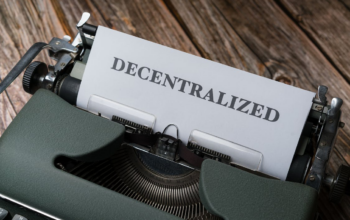With the advent of the paperless world, it has become increasingly difficult to do business without digital signatures. Authenticating documents and collaborating on contract agreements has made signing documents remotely increasingly common.
Approximately $3.2 billion was spent on digital signatures in 2016, a 30% increase from 2015. It is estimated that the digital signature market will reach $3.2 billion by 2022.
Describe what a digital signature is, how it works, and how you can use it to streamline the process of signing digital documents, and in turn, streamline your transactions. In this article, we will explore digital signatures and the benefits they provide, in order to help you find answers to these questions and more. For more information, visit confirmo.it.
Digital Signatures: How Do They Work?
In the same way traditional signatures work on paper, a digital signature works the same way on a soft/digital document. To create a digital signature, you don’t need to go through many steps. A document is sent to you via email, and the email directs you to a signature platform. Clicking the sign button indicates your agreement to the document. Unfortunately, this isn’t as straightforward as it seems.
Besides public-key cryptography, asymmetric cryptography can also be used to sign documents. Creating a public key and a private key is required before signing. The public key and private key are generated separately.
Each document is assigned a digital fingerprint by this software, which calculates a hash value. During validation, keys are used to encrypt and decode the hash value.
Using a public key, a computer can verify the integrity of a document by comparing its hash value with the content. Furthermore, it functions as a method of authentication and remains with the person who signed the document. When any information in a file is changed, the signature becomes invalid.
Comparison of digital signatures and electronic signatures
Also known as electronic signature or e-signature, “digital signatures” serve roughly the same purpose as electronic signatures. Digital signatures serve roughly the same purpose as e-signature security, despite having a much higher level of security.
A signature is generally an electronic process if it includes a symbol, a sound, or some other electronic component. Signatures can also be made by checking boxes or by using images.
The primary difference between a digital signature and an electronic signature lies in the systematic and highly secure approach to verifying and authenticating signers and documents. The legal significance of a digital signature is greater than that of an e-signature, as it covers a broader range of requirements. In this regard, e-signature can be used as an alternative to digital signature in order to obtain consent. A high degree of regulatory compliance is often required for legal, medical, and insurance documents.
Read Also : How to Choose Your Dissertation Topic?
Digital signatures offer a number of advantages
Physical signatures are no longer required with digital signatures. After a document has been signed, it cannot be modified without a digital signature.
It is common for overseas clients, associates, or contractors to have to sign documents requiring their signatures. The final records were compiled by that point since each participant received a copy of the document. Using this method would not be efficient.
It will be much easier to sign one document instead of collecting signatures from many people, and you won’t have to pay for postage. Compared to paper signatures, using digital signatures can save business owners up to 78%.
Enhance your business processes with digital signatures
Adobe, DocuSign, and eSignLive are just a few of the top companies in the world to offer digital signature services. You can choose from a wide range of security protocols and functions. Your organization can choose from numerous services that are beneficial to them.
Subscriptions to the platform are usually required, and you can either integrate the platform into your own IT infrastructure, or have it as a third-party service providing platform. When a small business needs digital signatures on an occasional basis, third-party services can be very helpful. API integration may prove much more convenient for companies that need an extensive set of digital signatures in their business processes.
Overview
Businesses that stay on top of digital trends are more efficient, as this improves their performance. You will not only gain a competitive edge, but also save time and resources by implementing innovative solutions. In the business world, digital signing is transforming long-standing practices.



